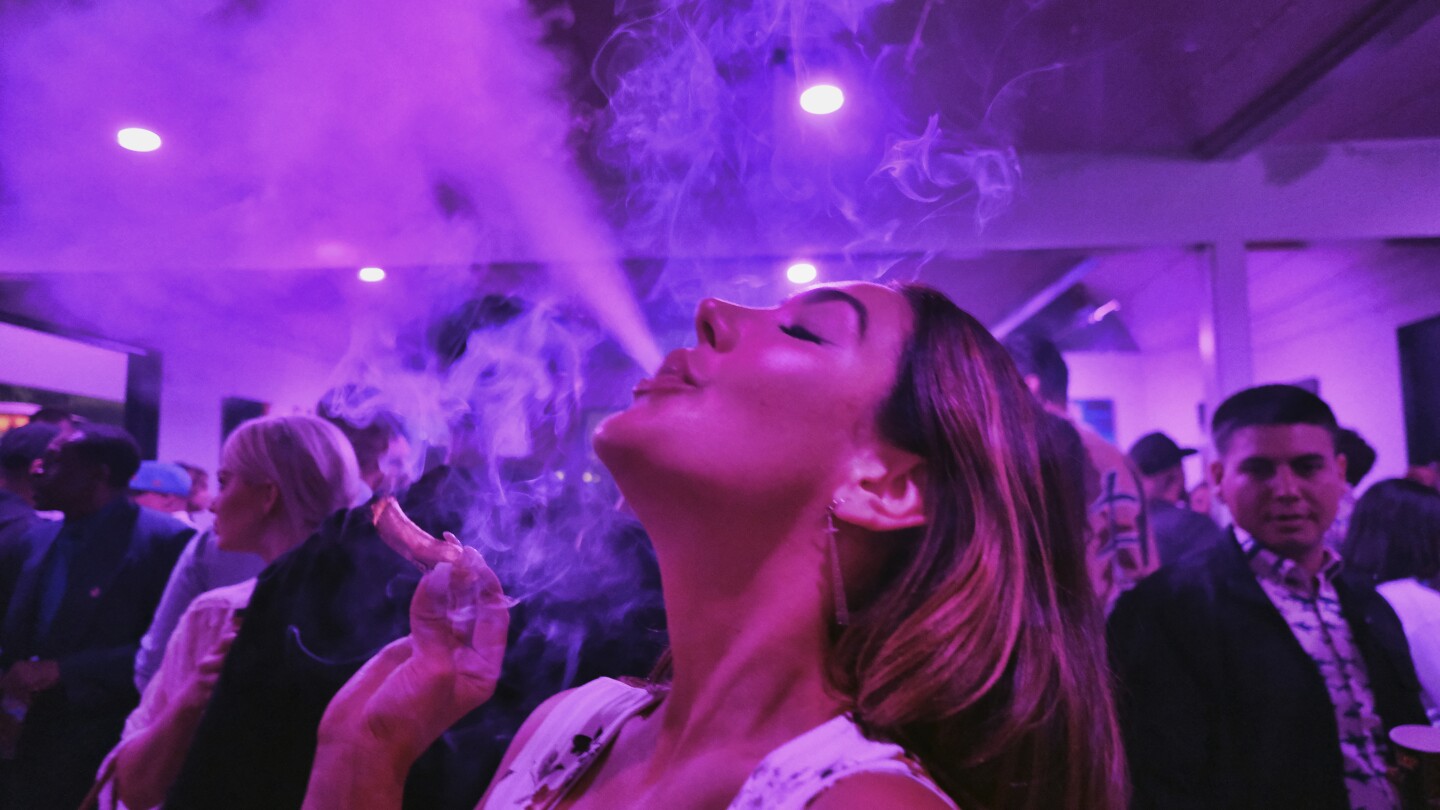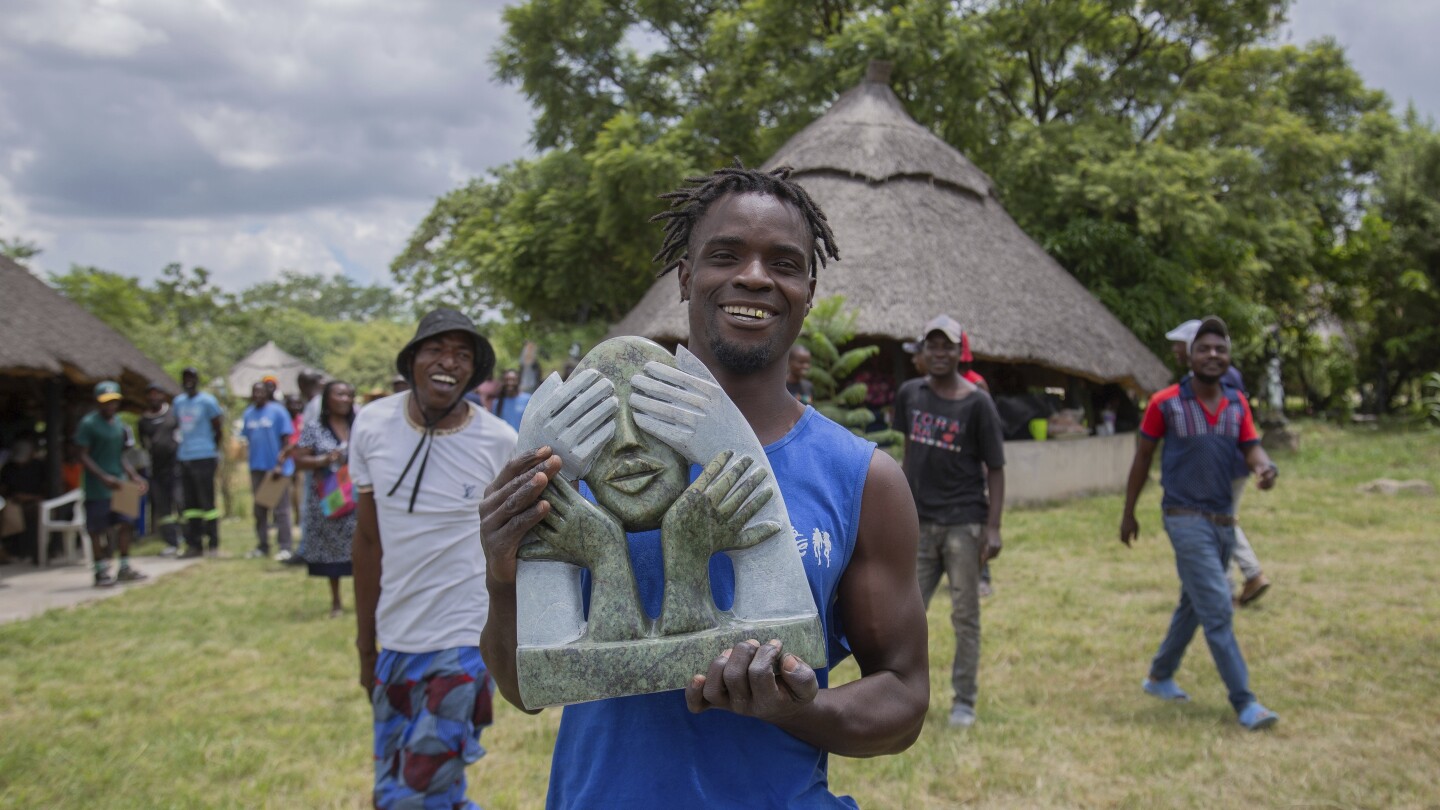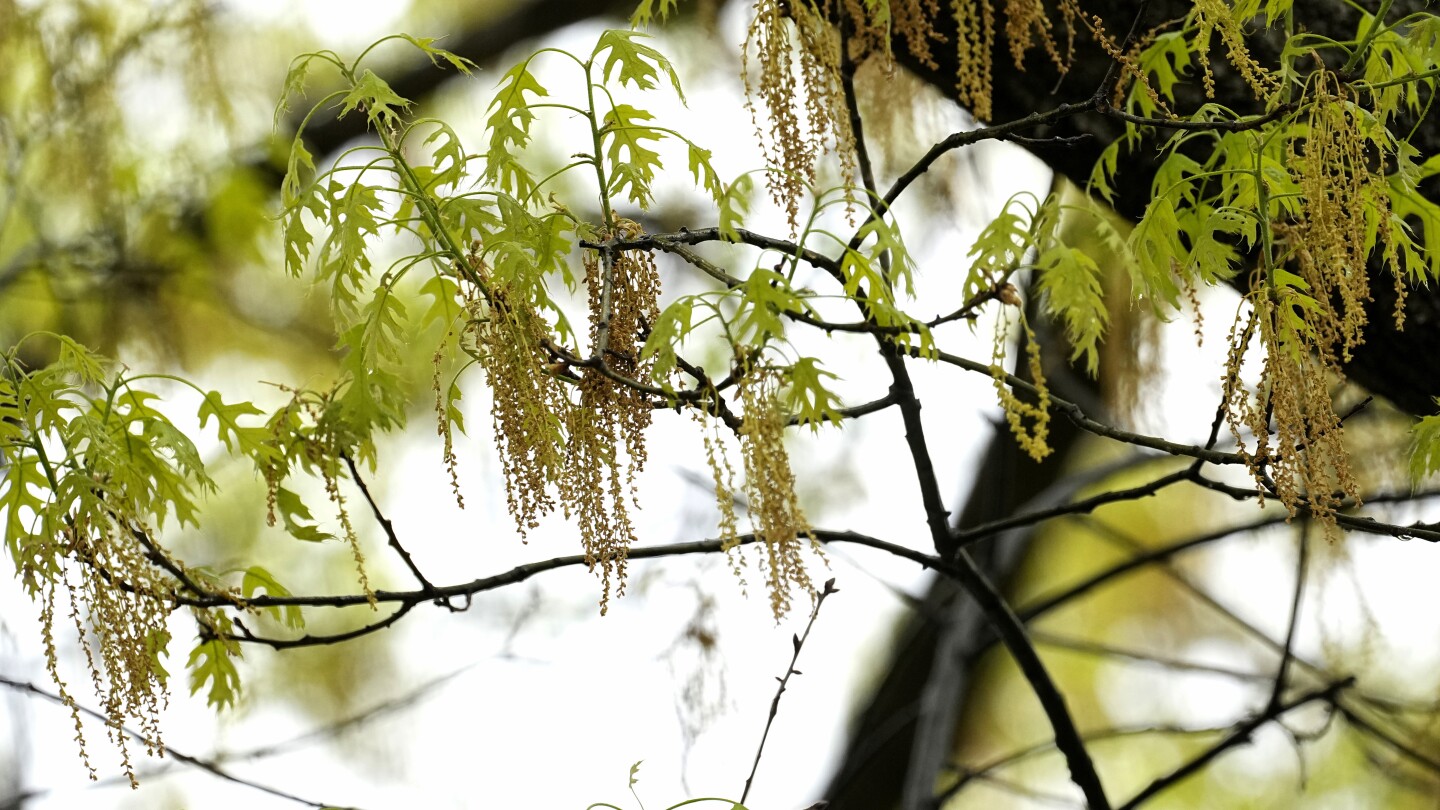Lifestyle
Women’s teams in the NCAA Tournament getting individual revenue share for 1st time. What’s a ‘unit’?

Women’s basketball teams in the NCAA Tournament for the first time will be getting an individual share of the March Madness revenue pie.
Women’s teams will earn financial incentives, known as units, for playing in the tournament. It is one of the final equity pieces that was missing between the men’s and women’s tournament. In the past, schools received no financial reward other than the NCAA covering the cost of a team’s expenses to play in the tournament.
The formula can be complicated, but the bottom line is conferences will receive $113,000 for each game a women’s team plays in the NCAA Tournament. The conferences will divvy that money up to their schools however they see fit.
Last season’s women’s tournament was the most successful ever, which included a record audience of 18.7 million for the title game won by South Carolina over Iowa and Caitlin Clark. The Gamecocks and Hawkeyes didn’t receive a dime from the NCAA for their efforts last year.
Now that will change.
What is a March Madness unit?
“Units” are what the NCAA calls its tally of wins, automatic qualifiers and at-large bids that determine how much conferences are paid.
A unit is money paid to conferences when one of its teams appears in the NCAA Tournament.
The women’s March Madness financial incentive program is now similar to the men’s basketball unit program. South Carolina coach Dawn Staley was one of the most outspoken advocates for the women’s teams to get the same financial rewards men’s teams receive.
Each of 32 conferences that receive an automatic bid to the tournament now receives a unit, and additional units are rewarded for teams that receive at-large bids.
A team will earn an additional unit for every game it plays in the tournament this year up until the title game.
Do players get any money from the unit share?
Currently the money generated by units is only disbursed to the school. However, that could change as NIL and revenue sharing with student-athletes continues to evolve.
Where does the money for unit shares come from?
Units are paid to conferences by the NCAA from revenue generated mostly through TV deals.
The NCAA signed a new media rights deal with ESPN which values the women’s basketball tournament at $65 million annually. There will be $15 million awarded to teams in the first year of the fund, which is 26% of the women’s basketball media revenue deal. That number will grow to $25 million, which is 41% of the revenue, by 2028. The 26% is on par with what men’s basketball teams received the first year the performance units program was established.
After reaching the fully funded amount of $25 million, the funds will grow at the same rate as all other Division I funds, which is approximately 2.9% each year.
The women have a higher percentage of the media revenue deal to bolster the value of each performance unit.
Do schools get the full amount of unit shares?
Conferences receive money from the units and divide it among its member schools.
The units earned by participating teams is paid to the schools’ respective conference offices starting in 2026 on a rolling three-year basis. A unit this year is worth just over $113,000 and a total of $251,000 for the three years. The Big Ten has a record 12 teams in the tournament and if somehow none of them wins a game, they’ve already earned $3 million for the conference.
If an individual team makes the Final Four this season, it could earn over $1.25 million for its conference. It’s up to the conference to decide how to divvy up the money earned to each of its member schools.
In comparison, a men’s unit for the 2024 tournament was worth $2 million total for a six-year rolling basis. The men have an $8.8 billion deal over eight years.
How to win March Madness units
The units come from two funds. The Equal Conference Fund is a baseline through which the NCAA awards one unit to each of the 32 Division I conferences that have an automatic bid. Through the performance fund, the NCAA also awards a single unit to every team that makes the tournament via an at-large berth.
There are 68 women’s teams that make the tournament; each accounts for one unit just for getting in.
Units are also awarded from the performance fund for teams that advance. One unit is awarded for every win until teams reach the Final Four. Wins in the semifinals or final don’t count for units.
___
The Associated Press’ women in the workforce and state government coverage receives financial support from Pivotal Ventures. AP is solely responsible for all content. Find AP’s standards for working with philanthropies, a list of supporters and funded coverage areas at AP.org.
___
AP March Madness: https://apnews.com/hub/march-madness Get poll alerts and updates on the AP Top 25 throughout the season. Sign up here.
Lifestyle
Marijuana holiday 4/20 coincides with Easter and Passover this year. Here’s what to know

Marijuana culture’s high holiday, known as 4/20, falls this year on Easter Sunday, as well as the last day of Passover, meaning cannabis fans can celebrate in some unusual ways, including an “Easter nug hunt” in Los Angeles, kosher-style THC gummies in New York and a “blaze and praise” drag brunch in Portland, Oregon.
“It seemed appropriate with egg prices today that we’d be searching for something else,” said Brett Davis, who runs the marijuana tour company Weed Bus Los Angeles and organized the “Easter nug hunt.”
Here’s a look at 4/20’s history and how it’s being celebrated this year:
Why 4/20?
The origins of the date, and the term “420” generally, were long murky.
Some claimed it referred to a police code for marijuana possession or was derived from Bob Dylan’s “Rainy Day Women No. 12 & 35,” with its refrain of “Everybody must get stoned,” 420 being the product of 12 times 35.
But the prevailing explanation is that it started in the 1970s with a group of bell-bottomed buddies from San Rafael High School, in California’s Marin County north of San Francisco, who called themselves “the Waldos.”
A friend’s brother was afraid of getting busted for a patch of cannabis he was growing in the woods at nearby Point Reyes, so he drew a map and gave the teens permission to harvest the crop, the story goes.
During fall 1971, at 4:20 p.m., just after classes and football practice, the group would meet up at the school’s statue of chemist Louis Pasteur, smoke a joint and head out to search for the weed patch. They never did find it, but their private lexicon — “420 Louie” and later just “420” — would take on a life of its own.
The Waldos saved postmarked letters and other artifacts from the 1970s referencing “420,” which they now keep in a bank vault, and when the Oxford English Dictionary added the term in 2017, it cited some of those documents as the earliest recorded uses.
How did 4/20 spread?
A brother of one of the Waldos was a close friend of Grateful Dead bassist Phil Lesh, as Lesh once confirmed in an interview with the Huffington Post, now HuffPost. The Waldos began hanging out in the band’s circle, and the slang term spread.
Fast-forward to the early 1990s: Steve Bloom, a reporter for the cannabis magazine High Times, was at a Dead show when he was handed a flyer urging people to “meet at 4:20 on 4/20 for 420-ing in Marin County at the Bolinas Ridge sunset spot on Mt. Tamalpais.” High Times published it.
“It’s a phenomenon,” one of the Waldos, Steve Capper, now 69, once told The Associated Press. “Most things die within a couple years, but this just goes on and on. It’s not like someday somebody’s going to say, ‘OK, Cannabis New Year’s is on June 23rd now.’”
While the Waldos came up with the term, the people who made the flier that was distributed at the Dead show — effectively turning 4/20 into a holiday — remain unknown.
How is it celebrated?
With weed, naturally.
In New York City, the cannabis brand Tokin’ Jew is advertising a kosher-style THC gummy line, “Tokin’ Chews,” designed to meet dietary restrictions for Passover.
Davis said he expected 300 people to partake in the West Hollywood Easter nug scavenger hunt this weekend, aided by a mobile app leading them through participating dispensaries, trivia challenges and “stoner activities.” There is a $500 cash prize.
In Portland, Bar Carlo is hosting the “blaze and praise” drag brunch. Cannabis consumption isn’t allowed onsite — “Please blaze before you arrive or go for a walk in the neighborhood in between performances,” the event listing reads — but there will be a door-prize gift basket from a local dispensary.
Bar owner Melinda Archuleta said the brunch is a dry run for hosting Pride month events in June. She herself doesn’t care much for marijuana, but as a Mexican American who has been influenced by Catholicism, she is interested in seeing the two cultures melded “in a cheeky way.”
“I’m really looking forward to seeing how the queens do it,” Archuleta said. “We’ve obviously given them carte blanche to do whatever they want — it’s 21 and up — so it doesn’t matter if it’s sacrilegious or borderline offensive.”
There are bigger celebrations, too, including the Mile High 420 Festival in Denver and one put on by SweetWater Brewing in Atlanta. Hippie Hill in San Francisco’s Golden Gate Park historically has attracted massive crowds, but the gathering was canceled for a second straight year, with organizers citing a lack of financial sponsorship and city budget cuts.
Just north of the Bay Area, Lagunitas Brewing in Petaluma, California, releases its “Waldos’ Special Ale” every year on 4/20 in partnership with the term’s coiners.
4/20 also has become a big industry event, with vendors gathering to try each other’s wares.
What about the politics?
There are 24 states that allow recreational marijuana and 14 others allowing it for medical purposes. But the movement recently has suffered some setbacks, with voters in Florida, North Dakota and South Dakota deciding not to adopt legalization measures last November.
Several states also have cracked down on intoxicating products derived from hemp, which have been widely sold even in prohibition states thanks to a loophole in the federal Farm Bill.
Marijuana remains illegal under federal law. As a candidate, President Donald Trump said he would vote for Florida’s amendment and signaled support for reclassifying marijuana as a less dangerous drug, a process started by the Biden administration.
But his administration has not indicated cannabis policy is a priority. A fact sheet released by the White House last month complained that marijuana decriminalization in Washington, D.C., was an example of “failed policies” that “opened the door to disorder.”
A bipartisan group of senators last week reintroduced legislation that would ensure states can adopt their own cannabis policies and remove certain financial hurdles for the industry, such as letting entities deduct business expenses on their taxes.
Charles Alovisetti, a lawyer with the cannabis industry law firm Vicente LLP, said he hopes the administration will push forward with marijuana reform at the federal level, saying “it does align with some of their policy objectives — namely reducing criminal activity, or cartel activity.”
He also encouraged advocates to keep pushing, noting some measures such as improving banking access for marijuana businesses might pass as part of larger legislative packages.
“You continue speaking up, even if the political momentum isn’t there,” Alovisetti said. “It’s only possible if you stay in everyone’s ear.”
Lifestyle
Zimbabwe’s stone carvers seek a revival as an Oxford exhibition confronts a British colonial legacy

CHITUNGWIZA, Zimbabwe (AP) — A pair of white hands blinding a Black face. A smiling colonizer with a Bible, crushing the skull of a screaming native with his boot. Chained men in gold mines, and a pregnant woman.
These stone sculptures from Zimbabwe will take center stage at an upcoming exhibition at Oxford University in Britain, aiming to “contextualize” the legacy of British imperialist Cecil John Rhodes with depictions of religious deception, forced labor and sexual abuse.
Rhodes conquered large parts of southern Africa in the late 19th century. He made a fortune in gold and diamond mining and grabbed land from the local population. His grave lies under a slab of stone atop a hill in Zimbabwe.
Oxford’s Oriel College, where the exhibition will be held in September, is a symbolic setting. A statue of Rhodes stands there despite protests against it since 2015. Rhodes, who died in 1902, was an Oriel student who left 100,000 pounds (now valued at about 10.5 million pounds, or $13.5 million) to the school. His influence endures through a scholarship for students from southern African countries.
For Zimbabwean stone carvers at Chitungwiza Arts Center near the capital, Harare, the exhibition is more than an opportunity for Western audiences to glimpse a dark history. It is also a chance to revive an ancient but struggling art form.
Stone sculpture, once a thriving local industry, has suffered due to vast economic challenges and declining tourism.
“This will boost business. Buyers abroad will now see our work and buy directly from the artists,” said sculptor Wallace Mkanka. His piece, depicting the blinded Black face, was selected as the best of 110 entries and will be one of four winning sculptures on display at Oxford.
Zimbabwe, meaning “House of Stone,” derives its identity from the Great Zimbabwe ruins, a 1,800-acre Iron Age city built with precision-cut stones delicately stacked without mortar. It is a UNESCO World heritage site.
The southern African country has long used stone sculpture as a form of storytelling to immortalize history. The craft survived close to a century of colonial rule that sought to erase local traditions, religion and art forms.
It thrived internationally instead. Thousands of pieces were plundered from Africa. Some later became subjects of repatriation campaigns. Others became prized by tourists and collectors. A permanent collection of 20 Zimbabwean stone sculptures is displayed in a pedestrian tunnel at Hartsfield-Jackson Atlanta International Airport, one of the world’s busiest.
At its peak following independence, Zimbabwe’s stone sculpture industry thrived, with local white farmers purchasing pieces for their homes and facilitating international sales.
“Customers were everywhere. They would pay up front, and I always had a queue of clients,” recalled Tafadzwa Tandi, a 45-year-old sculptor whose work will feature in the Oxford exhibition.
However, the industry has struggled over the past two decades.
Zimbabwe’s global image suffered after controversial land reforms more than two decades ago displaced over 4,000 white farmers to redistribute land to about 300,000 Black families, according to government figures. Late ruler Robert Mugabe defended the reforms as necessary to address colonial-era inequities, but they had unintended economic consequences.
“Many of our customers were friends of the farmers. That is where the problem originated from,” said Tendai Gwaravaza, chairman of Chitungwiza Arts Center.
At the center, the sound of grinders filled the air as sculptors carved. Hundreds of finished pieces, ranging from small carvings to life-sized sculptures, waited for buyers.
“The only solution now is to get out there to the markets ourselves. If we don’t, no one will,” Gwaravaza said.
The Oxford exhibition represents such an opportunity for exposure, he said.
It is the brainchild of the Oxford Zimbabwe Arts Partnership, formed in response to the “Rhodes Must Fall” campaign during the Black Lives Matter protests in the U.S.
The group, consisting of Zimbabwean artists, an Oxford alumnus and a professor of African history, initially envisioned a larger project titled “Oxford and Rhodes: Past, Present, and Future.” It included enclosing Rhodes’ statue in glass, installing 100 life-size bronze statues of African liberation fighters and creating a collaborative sculpture using recycled materials to represent the future.
However, the project required an estimated 200,000 pounds, far beyond available resources. Eventually, Oriel College provided 10,000 pounds for a scaled-down exhibition.
“It’s still my hope that one day it could happen, but for now we have just accepted something very small to make a start and to do something,” said Richard Pantlin, the Oxford alumnus and OZAP co-founder.
___
For more on Africa and development: https://apnews.com/hub/africa-pulse
___
The Associated Press receives financial support for global health and development coverage in Africa from the Gates Foundation. The AP is solely responsible for all content. Find AP’s standards for working with philanthropies, a list of supporters and funded coverage areas at AP.org.
Lifestyle
Allergy season: How to check pollen levels and alleviate symptoms

ATLANTA (AP) — Allergy season can be miserable for tens of millions of Americans when trees, grass, and other pollens cause runny noses, itchy eyes, coughing and sneezing.
Where you live, what you’re allergic to and your lifestyle can make a big difference when it comes to the severity of your allergies. Experts say climate change is leading to longer and more intense allergy seasons, but also point out that treatments for seasonal allergies have become more effective over the last decade.
Here are some tips from experts to keep allergy symptoms at bay — maybe even enough to allow you to enjoy the outdoors.
Where are pollen levels the worst this year?
The Asthma and Allergy Foundation of America issues an annual ranking of the most challenging cities to live in if you have allergies, based on over-the-counter medicine use, pollen counts and the number of available allergy specialists.
This year, the top five cities are: Wichita, Kansas; New Orleans; Oklahoma City; Tulsa, Oklahoma; and Memphis.
Which pollens cause allergies?
There are three main types of pollen. Earlier in the spring, tree pollen is the main culprit. After that grasses pollinate, followed by weeds in the late summer and early fall.
Some of the most common tree pollens that cause allergies include birch, cedar, cottonwood, maple, elm, oak and walnut, according to the Asthma and Allergy Foundation of America. Grasses that cause symptoms include Bermuda, Johnson, rye and Kentucky bluegrass.
This article is part of AP’s Be Well coverage, focusing on wellness, fitness, diet and mental health. Read more Be Well.
How do I track pollen levels?
Pollen trackers can help you decide when to go outside. The American Academy of Allergy Asthma and Immunology tracks levels through a network of counting stations across the U.S. Counts are available at its website and via email.
Limit your exposure to pollens
The best and first step to controlling allergies is avoiding exposure. Keep the windows in your car and your home closed, even when it’s nice outside.
If you go outside, wearing long sleeves can keep pollen off your skin to help ward off allergic reactions, said Dr. James Baker, an allergist at the University of Michigan. It also provides some sun protection, he added.
When you get home, change your clothes and shower daily to ensure all the pollen is off of you — including your hair. If you can’t wash your hair every day, try covering it when you go outside with a hat or scarf. Don’t get in the bed with your outside clothes on, because the pollen will follow.
It’s also useful to rinse your eyes and nose with saline to remove any pollen, experts said. And the same masks that got us through the pandemic can protect you from allergies — though they won’t help with eye symptoms.
How to relieve allergy symptoms
Over-the-counter nasal sprays are among the most effective treatments for seasonal allergies, experts said.
But the vast majority of patients use them incorrectly, irritating parts of the nose, said Dr. Kathleen Mays, an allergist at Augusta University in Georgia. She suggested angling the nozzle outward toward your ear rather than sticking it straight up your nose.
Over-the-counter allergy pills like Claritin, Allegra and Zyrtec are helpful, but may not be as effective as quickly since they’re taken by mouth, experts said.
Experts also said that if your allergy symptoms are impacting your quality of life, like causing you to lose sleep or a lack focus at work or school, it might be time to consider an allergist appointment for immunotherapies.
Some remedies for allergy relief that have been circulating on social media or suggested by celebrities — like incorporating local honey into your diet to expose yourself to pollen — have been debunked.
Dr. Shayam Joshi, an allergist at Oregon Health and Science University, said that’s because the flowers that bees pollinate typically don’t contain the airborne pollen that causes allergy symptoms.
Is allergy season changing?
With climate change, winters are milder and growing seasons are longer, meaning there’s more opportunity for pollen to stay in the air, resulting in longer and more severe allergy seasons.
In many areas across the country, pollen counts have broken decades of records. In late March, the Atlanta Allergy and Asthma Center measured a pollen count of over 14,000 grains per cubic meter, which is considered extremely high.
___
The Associated Press Health and Science Department receives support from the Howard Hughes Medical Institute’s Science and Educational Media Group and the Robert Wood Johnson Foundation. The AP is solely responsible for all content.
-

 Education2 days ago
Education2 days agoHarvard’s battle with the Trump administration is creating a thorny financial situation
-

 Sports2 days ago
Sports2 days agoAaron Rodgers ‘not holding anybody hostage’ as he decides his future, retirement a possibility
-

 Conflict Zones2 days ago
Conflict Zones2 days ago‘How do I live like this?’ asks Gaza boy who lost arms in Israeli attack | Gaza News
-

 Middle East22 hours ago
Middle East22 hours agoTunisian court hands opposition figures lengthy jail terms | Human Rights News
-

 Lifestyle2 days ago
Lifestyle2 days agoFans of Superman relate to comic’s religious and ethical themes
-

 Europe2 days ago
Europe2 days agoLive updates: Trump news, Ukraine peace talks, US immigration, tariffs and university funding
-
Europe1 day ago
Italy cable car: Four people killed, one injured as car plunges into a ravine
-

 Conflict Zones1 day ago
Conflict Zones1 day agoTrump says US may ‘pass’ on helping end war if Russia, Ukraine resist deal | Russia-Ukraine war News




